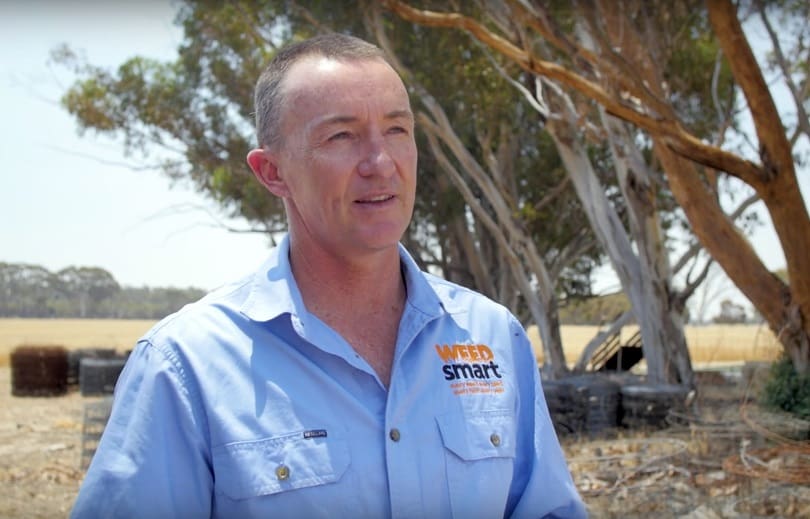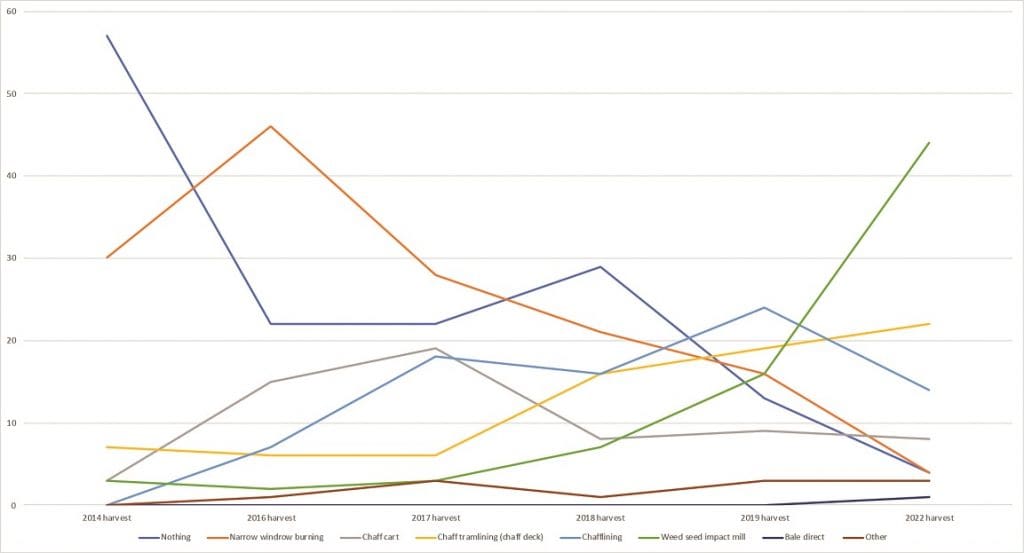A SIMPLE online survey of 147 farmers from around Australia has added weight to the observations that growers are rapidly adopting harvest weed seed control methods that best suit their farms.
WeedSmart has previously conducted a similar survey in 2017 (269 respondents) and 2018 (95 respondents), and in 2014 a GRDC-funded grower practices survey led by Rick Llewellyn from CSIRO, 600 growers answered questions related to the adoption of harvest weed seed control methods.
WeedSmart and AHRI extension agronomist in Western Australia, Peter Newman, has been following the adoption trends closely.
“We know that these surveys are biased and are not statistically rigorous, but together they are showing trends that we are also seeing in the field,” he said.
“As growers invent, modify and trial different harvest weed seed control tools there is a rapid move toward actively managing survivor weeds at harvest and the adoption of tools that don’t involve burning.”
The most important and encouraging finding is that the percentage of growers ‘doing nothing’ to capture and destroy weed seeds present at harvest has declined dramatically since 2014 harvest, from almost 60 per cent, down to around 5pc predicted for 2022 harvest.
“This is a significant change in attitude and suggests that growers are taking the opportunity to tackle herbicide resistance head-on. When it comes to choosing the best tool for the job, growers can be assured that each of the tools available are equally effective at capturing and destroying weed seeds,” Mr Newman said.
“Some tools have a particular fit for certain situations, such as a chaff cart might be chosen for a mixed farming operation, or chaff tramlining chosen to help manage dust and erosion risk in a controlled traffic system.”
Around 10pc of growers are using and expect to continue using chaff carts and there is steady adoption of chaff tramlining, with almost 20pc of respondents planning to use a chaff deck this harvest.
“It is clear that narrow windrow burning has been superseded and few growers will be disappointed about having better options that conserve nutrients and involve less risk,” he said.
“Less than 5pc of growers expect to still be doing narrow windrow burning in the 2022 harvest.”
While chaff lining has been rapidly adopted as a simple and cheap alternative to narrow windrow burning, many growers indicated that they would not be using this method in 2022.
The trends indicate that many of these growers will be looking carefully at recent developments with weed seed impact mills.
“With three weed seed impact mill manufacturers now offering machines in Australia, growers are the beneficiaries of increased competition and many see this as the ultimate solution to weed seed, stubble and nutrient management at harvest,” Mr Newman said.
Source: Weedsmart, www.weedsmart.org.au
Harvest weed seed control is one of the WeedSmart Big 6 suite of tactics to contain the threat of herbicide resistance in weeds.





HAVE YOUR SAY